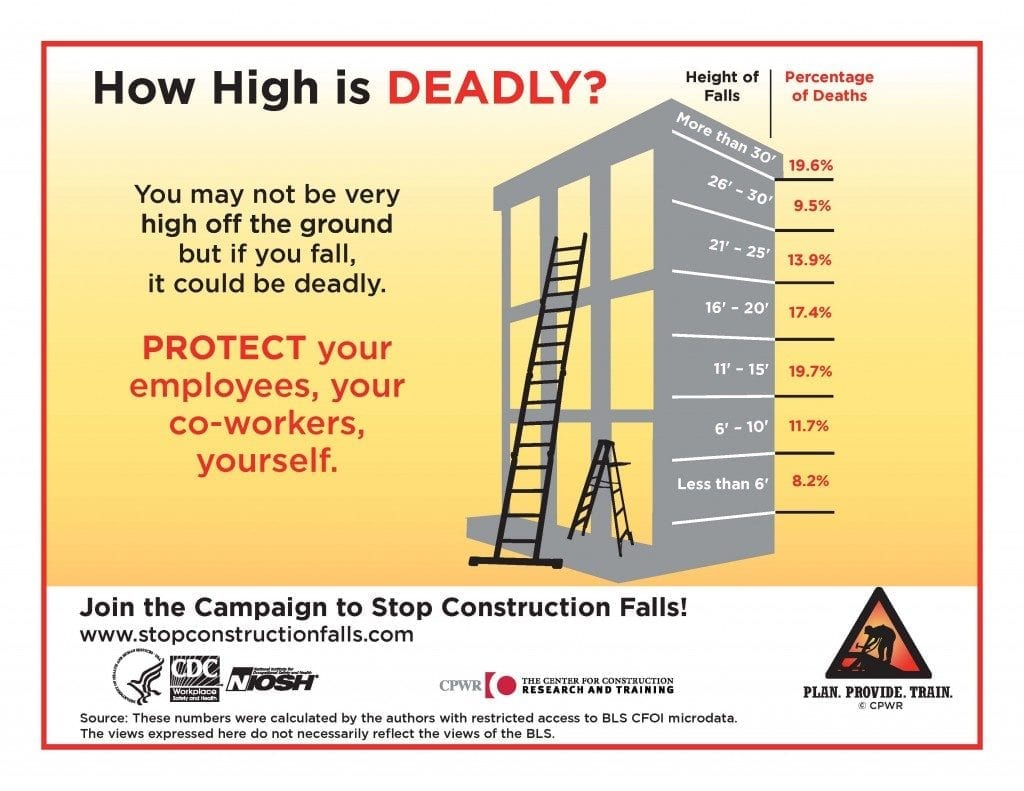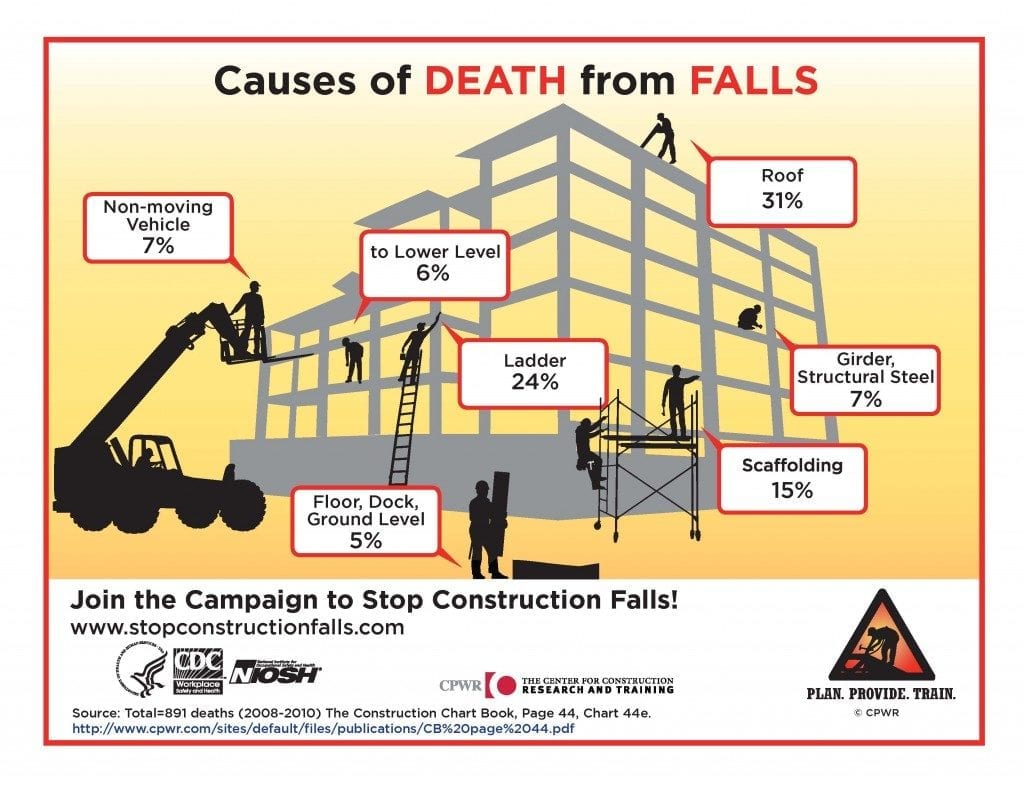Insight
Published and updated
Fall Safety: There Are 2 Kinds of Luck
The bluesman Albert King wrote in his song “Born Under a Bad Sign” that, “If it wasn’t for bad luck, I wouldn’t have no luck at all.” Too often, workers rely on luck for fall safety.
Whether it’s because they feel invincible, over-confident in their experience, rushed to complete a project or are working for a company that ignores fall safety, they forget that there are two kinds of luck.
“Good luck” is the term that comes to mind after five contractors on this apartment construction site incurred $115,200 in fines and 20 violations for fall hazards. I say “good luck” because OSHA identified the hazards during an inspection, NOT during a post-accident investigation. No one was hurt or killed, and the $115,200 is a slap on the wrist compared to a worker’s compensation claim or wrongful death lawsuit.
“Bad luck” is what you call it after a fall.
Fall Safety Measures: Be Proactive
In a recent survey of employees in high-risk industries by the National Safety Council, 60 percent of construction workers and 52 percent of agriculture and forestry workers felt employers prioritized productivity over safety. Yet 70 percent of all employees surveyed agreed that “safety training is part of their orientation and that employee health and well-being is promoted at work.”
There’s a disconnect somewhere, because fall protection citations again topped the list of OSHA’s 10 most frequent violations. In 2014, there were 899 deaths attributed to falls; 359 of those occurred in construction.
The following is a collection of resources and information to help initiate, monitor and maintain a fall safety plan that you should make part of your safety culture.
Plan. Provide. Train.
OSHA, the National Institute for Occupational Safety and Health (NIOSH) and National Occupational Research Agenda (NORA) – Construction Sector teamed up in 2012 for the “Plan. Provide. Train” fall safety awareness campaign.
- Plan ahead: Figure out what needs to be done, the fall safety measures that will be required, and then include fall safety equipment in the job estimate. Not sure when fall safety measures are required? In this article, Simplified Safety clearly explains the regulations for general industry (4 feet), construction (6 feet) and shipyard (4 to 5 feet), as well as the numerous contingencies you need to know.
- Provide the right equipment: Different jobs require different equipment. Determine if each work area requires scaffolding, ladders, fall prevention or fall arrest systems.
- Train workers to recognize hazards and how to use fall safety equipment: One lax worker can undermine all your training and preparation. Incentivize safety, ingrain it in every aspect of your work environment—from estimating to production to lunch breaks—and remind workers that as skilled as they are, no one is immune to gravity.

Fall Prevention v. Fall Protection
It’s important to know the difference between fall prevention and fall protection. Fall prevention refers to the safety measures you take to stop falls before they happen. Examples include guardrails, skylight screens and safety gates.
Fall protection refers to the safety equipment you use to halt a fall before it can cause injury or death. Examples include complete fall arrest systems, safety harnesses, anchor points, safety lanyards and self-retracting lifelines.
Now let’s mix it up a little: Another essential fall prevention measure is a fall protection plan. I know it’s confusing, but fall protection plans are what you document before work begins. They lay out what fall prevention and protection equipment will be used in the work environment. Here are a few resources to help you craft your fall protection plan:
- OSHA general construction sample fall protection plan
- OSHA residential construction sample fall protection plan
- Washington State Dept. of Labor and Industries sample fall protection plans (in Spanish, too)
Creating, monitoring and sticking to your fall protection plan will help you prevent fall injuries. Another safety measure that is very effective before the fall is hands-free communication.

Fall injuries and fatalities can result from slips at ground level as quickly as they can from trips off of rooftops. Don’t overlook the ability to shout a warning to someone even if they’re a thousand feet away, request immediate assistance, or contact maintenance to clean up a spill or debris without removing your eyes, ears or hands from the task at hand. Fall safety, as with all workplace hazards, will be reinforced with sharper situational awareness.
Remember, as we learned from the National Safety Council survey, workers don’t want to put their lives on the line. They want a lifeline. And luck should have nothing to do with it.